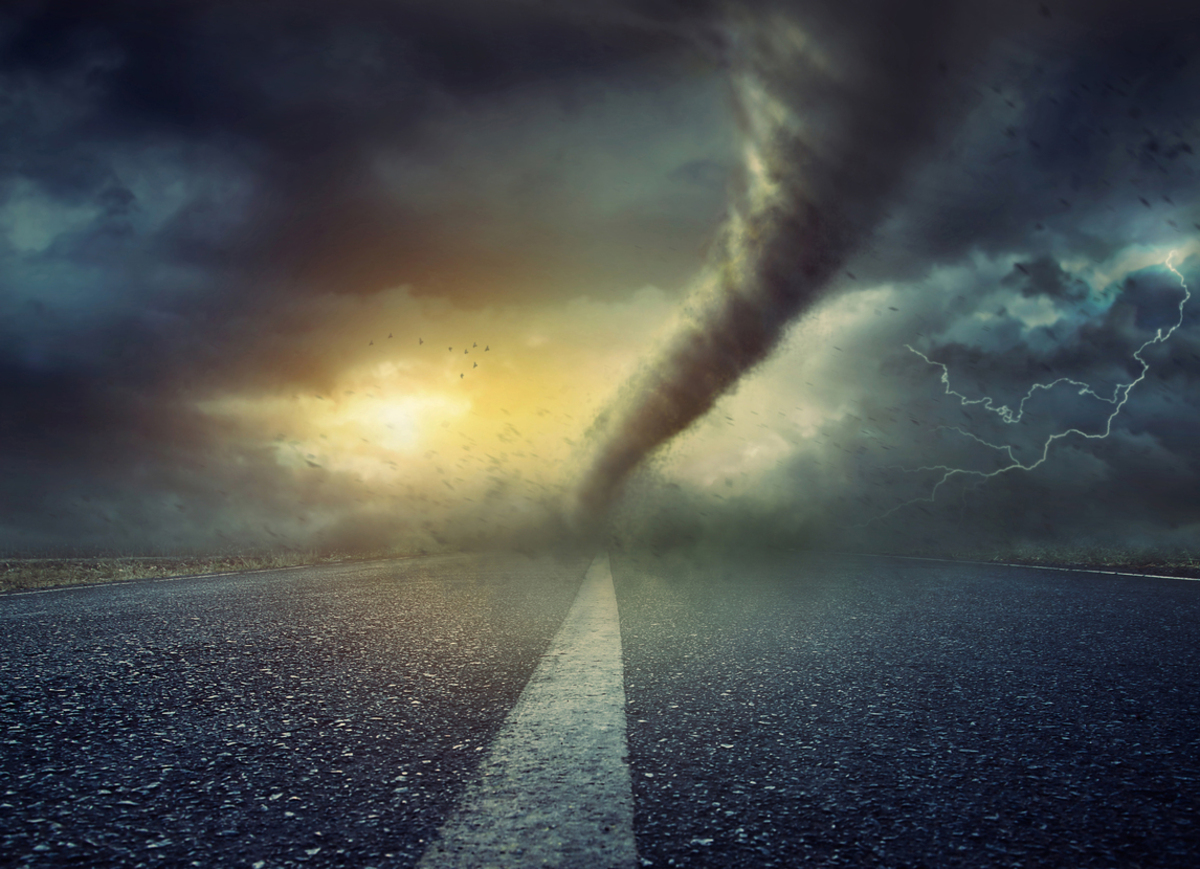Natural disasters — like floods, landslides, earthquakes, hurricanes, tornadoes, and wildfires — can have a big negative impact on the life of individuals and whole communities alike. They can kill, injure, and tear away your home, job, and community in one fell swoop. Though they often show up with little warning and may be over quite soon, they do lasting damage that often takes years to rebuild. And that's not only true for the physical world, but for your emotional health as well.
Natural disasters are often traumatic, so of course you can develop PTSD after living through one. What do you need to know?

1. PTSD rates are fairly low in the aftermath of natural disasters
Human-made disasters like terrorist attacks and school shootings and technological disasters, such as mining disasters or air crashes, tend to lead to PTSD in higher numbers than natural disasters. This is probably because studies that have investigated the topic include whole populations that were technically exposed to a natural disaster — and not everyone will have been equally affected. It's also important to note that not all natural disasters result in massive loss of life, and some will not claim any lives.
You're more likely to develop PTSD if you were directly exposed to the worst of a natural disaster, or if you were a first responder who ran towards the disaster to help people. Children are also particularly likely to suffer from PTSD after a natural disaster. Though different studies have estimated the prevalence of PTSD after natural disasters to be anywhere between four and 60 percent in the first couple of years post-disaster, first responders (especially firefighters) have about a one in five risk of developing post-traumatic stress disorder after serving in the midst of a natural disaster.
2. Social support is crucial after a natural disaster
You'd think that adverse events like losing your home and your job after a natural disaster would greatly contribute to the risk of developing post-traumatic stress disorder, right — these experiences themselves being potentially traumatic? One study conducted among victims of a tornado found that this wasn't the case, surprisingly.
Parents may, on the other hand, be surprised to find out that overprotectiveness and "babying" their adolescent children after a natural disaster — fairly intuitive responses to an event in which you all could have died, I'd say — are detrimental to teens' mental health, potentially even raising the risk of PTSD.
3. Delayed-onset PTSD may be more common after natural disasters
Even if PTSD does emerge soon after the disaster, symptoms tend to change over time in a particular way. People often experience intrusion symptoms (like persistent intrusive memories, flashbacks, and nightmares) and arousal symptoms (like hypervigilance and an exaggerated startle response) initially. While these wane over time, avoidance symptoms — attempts to avoid reminders of the trauma — can increase with time after a natural disaster.
5. How to recognize PTSD after a natural disaster
It's completely normal to feel all sorts of things after a natural disaster — anything from deep sadness and grieving to anger and fear. How do you know whether you are experiencing normal post-disaster feelings, or PTSD for which you could really do with treatment?
PTSD is marked by:
- At least one intrusion symptom — intrusive memories of the event that just won't leave you alone, nightmares, or flashbacks in which you feel like you're momentarily there again. Anything that reminds you of the disaster causes you profound distress.
- At least one avoidance symptom — you try to stay away from internal reminders of the disaster (thoughts, feelings, memories), or external reminders such as people, places, or events.
- At least two negative changes in your mood and thought patterns — being unable to remember important parts of the disaster, excessively negative thoughts about yourself, others, or the world at large, being consumed by self-blame or blaming others, constant negative feelings (fear, horror, anger, shame), losing interest in previously important activities, feeling detached from others, and a chronic inability to experience positive emotions.
- At least two hyperarousal symptoms — always being on guard, easily being startled, inability to concentrate, dysfunctional sleep, irritable and angry behavior, and reckless of self-destructive behavior.
- American Psychiatric Association. (2013). Diagnostic and statistical manual of mental disorders (5th ed.). Arlington, VA
- Photo courtesy of SteadyHealth


Your thoughts on this